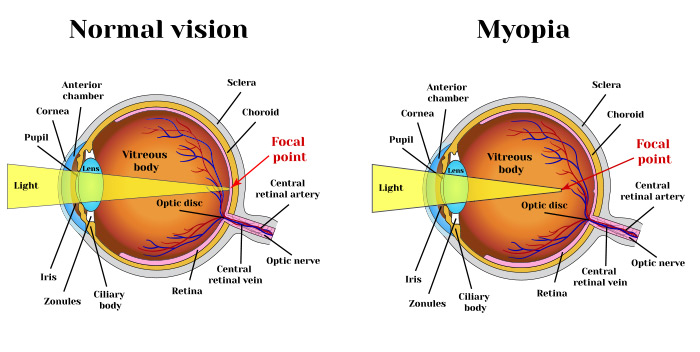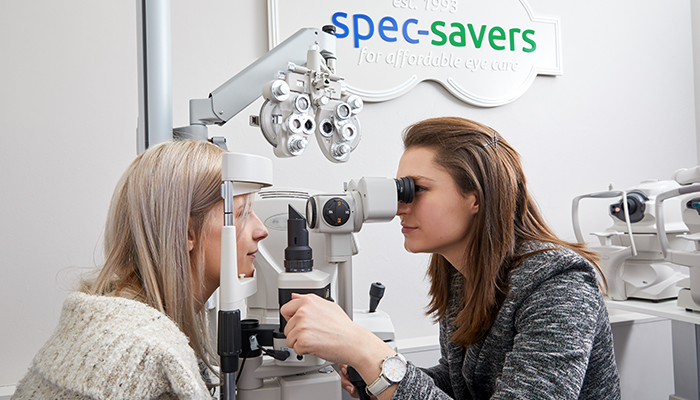.jpg)
Myopia is a growing concern for the World Health Organisation, as it is predicted that nearly half* of the global population may be myopic by 2050. The WHO also believe that myopia will become a leading cause of permanent blindness worldwide. It’s not entirely clear why cases of myopia are increasing but research suggest that prolonged periods of screen time, from handheld devices to television, may eventually lead to reduced ability to see things at a distance. It is important to know what Myopia is, how to prevent and treat it as this may save your vision!
What is myopia?
.jpg)
Myopia is the medical term used to describe shortsightedness (also known as nearsightedness). People with Myopia find that objects or people at a distance look blurry, BUT as soon as they get closer, they become clearer! Some of the signs and symptoms of myopia include eyestrain, headaches, squinting to see properly and difficulty seeing objects far away, such as road signs or a blackboard at school.
What causes myopia?

Myopia is most often inherited or can be caused by the shape of your eye. When the eyeball is elongated or stretched, creating a longer distance between the cornea and the retina (the “front” and the “back” of the eye) this causes the cornea to assume a different shape which causes blurriness in vision when trying to focus on objects too far away. However, the recent dramatic increase in the prevalence of myopia worldwide strongly suggests environmental causes, such as lack of time spent outdoors and a lot of close work like typing, reading, lab work or screen-time, may also significantly contribute to its development.
Why should it not be left untreated?
Myopia leads to an increased risk of serious eye conditions such as myopic macular degeneration, retinal detachment, glaucoma, and cataracts that can lead to visual impairment or blindness. These eye diseases become more prevalent as the levels of myopia increase. It is vital to manage your eye health before it becomes irreversible – you only get one set of eyes!
Can myopia be cured?
The standard goal of treating nearsightedness is to improve vision by helping focus light on your retina through the use of corrective lenses or refractive surgery. This includes the use of spectacles, eye drops, contact lenses (orthokeratology or soft multifocal contact lenses), binocular vision training and exposure to light and the outdoors. Intervention before age 12 will have the biggest impact on reducing progression.
How much myopia is normal?
Optometrists work out how much focusing power your eye has. This is measured using dioptres – how strong a lens would have to be to give you focused vision. Myopia levels are based on how many dioptres your lens would need to be to correct your sight back to normal. The higher the number the more short-sighted you are.
Myopia control?
Early diagnosis of myopia can save your sight and significantly reduce the subsequent risks from associated diseases. Get outdoors; limited the use of technology; get your eyes tested at least every two years; increase your intake of fish, nuts, legumes and seeds, citrus fruits, beef, leafy greens and carrots.

The best course of action is to get an accurate diagnosis first, and then begin treating myopia as per the instructions of your optometrist. Spec-Savers’ is here to assist you, make an eye appointment today by clicking https://www.specsavers.co.za/book-online
*https://myopiainstitute.org/myopia/
Date Published: 20 May 2021